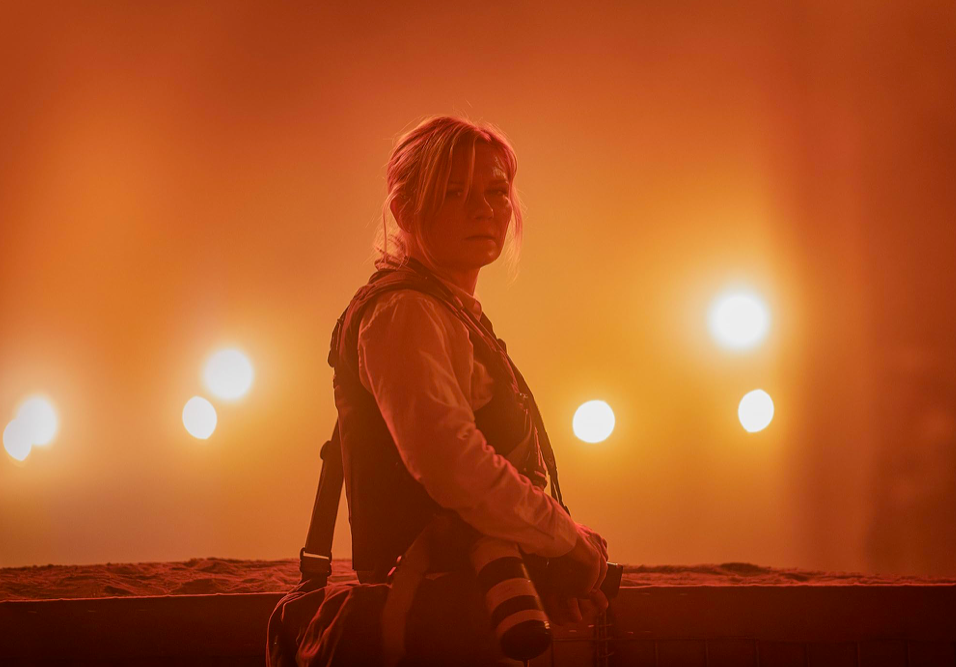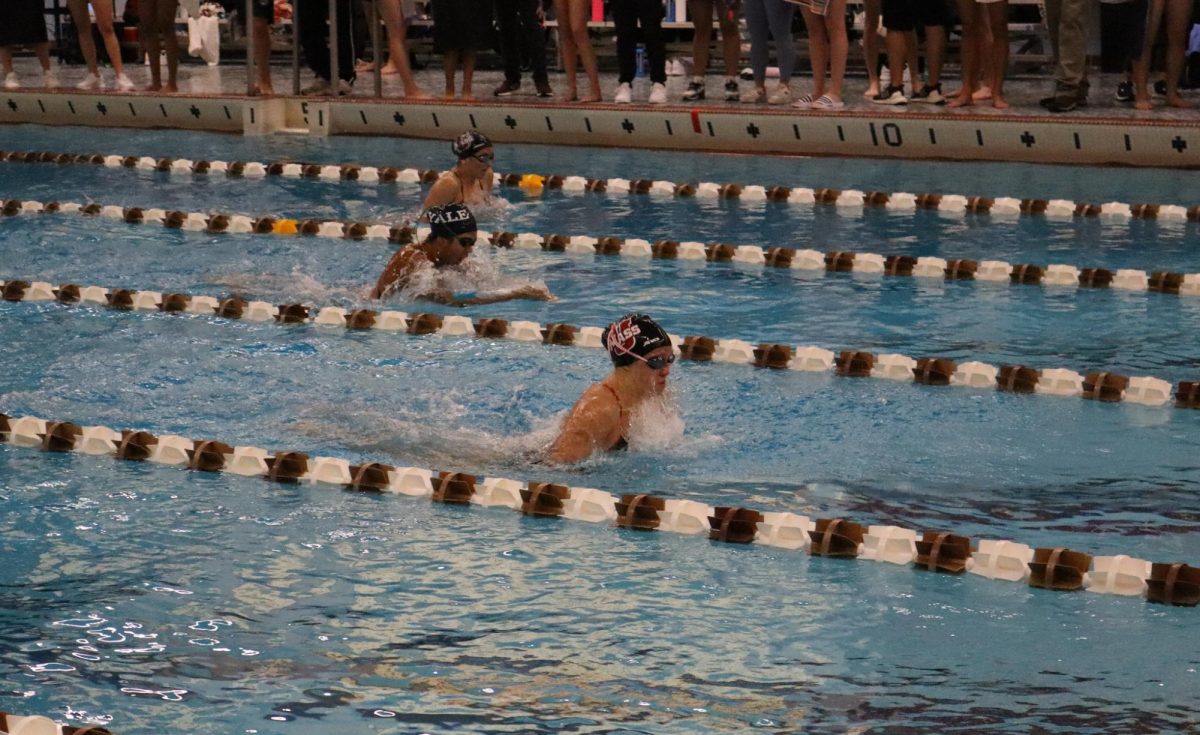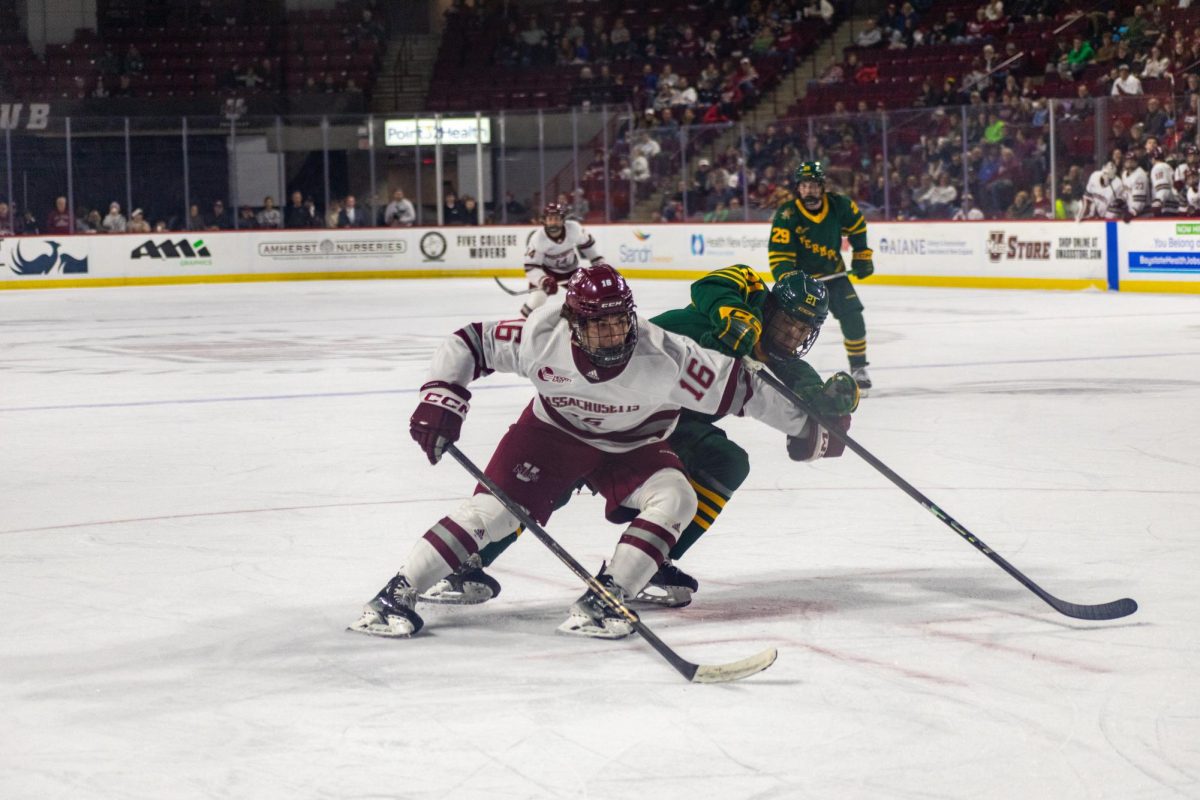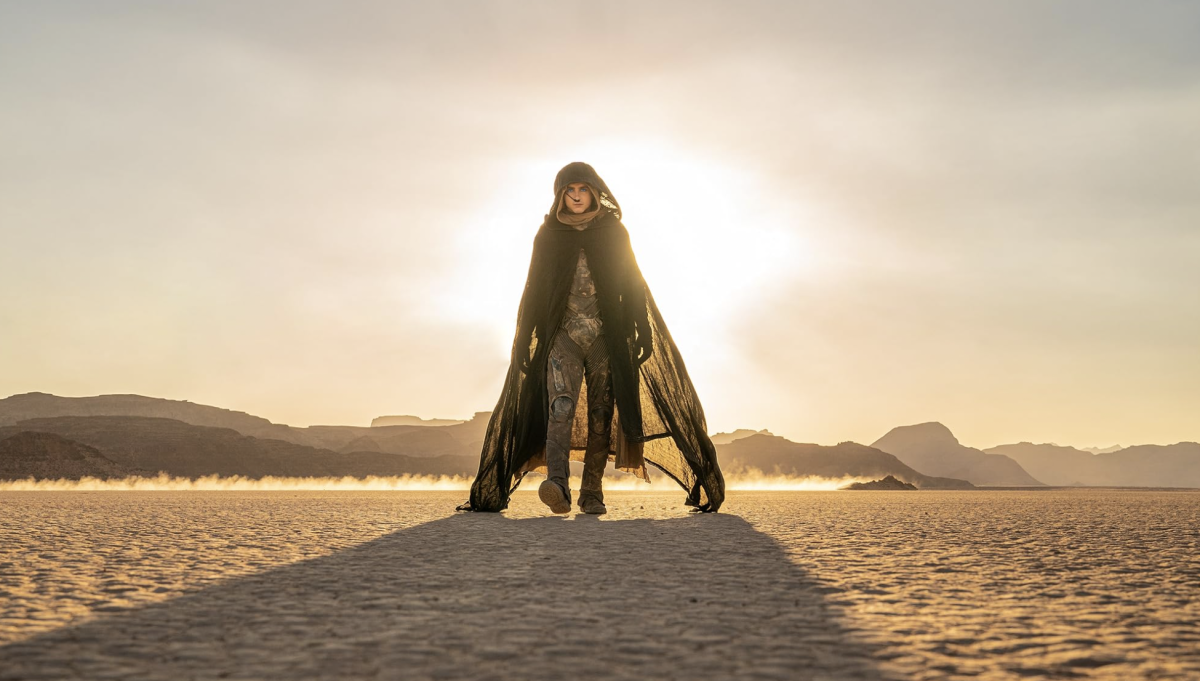“Civil War” opens with the president of the United States practicing his latest speech, a fanatical refusal to surrender to a secessionist faction known as the Western Forces. This president, played by Nick Offerman, remains nameless and party-less for the entire movie, appearing in just two scenes. Even his hair seems to be deliberately bipartisan, styled with the precarious architecture of Donald Trump’s signature look and the salt-and-pepper coloring of Bill Clinton. This sort of ambiguity defines writer and director Alex Garland’s latest project.
For a movie with such a provocative “what if” concept — and a marketing campaign to match — the film presents us with the effects of a modern-day civil war with almost none of the context. Remarkably, the decision largely pays off. Instead of the high-octane, totemic war movie suggested by trailers, the real “Civil War” is a psychologically complex but politically avoidant thriller, closer in tone to the Garland-penned “28 Days Later” than a more overtly political film like “Children of Men.”
Set in the near future, this is a road movie about a band of journalists on their hellish journey from New York City to the front lines of the war in Washington, D.C. Garland questions the ethics of reproducing traumatic images, and the long-term effects they have on the imagemakers. Somewhat ironically, the movie revels in traumatic images of its own, from senseless shootings to all-out sieges. The witnesses to these traumas are three veteran journalists and an ambitious rookie eager to prove herself as an intrepid reporter.
One of these veterans is Lee Smith (Kirsten Dunst), whom we meet at a loaded point in her career. A celebrated war photojournalist, she’s haunted by the harrowing images she’s captured and shared for decades. When her colleague Joe (Wagner Moura) invites the young Jessie (Cailee Spaeny) to tag along for their journey to D.C., she further questions her place within the field, as well as her place in a country that has continually worn her down.
Dunst is a revelation, giving a fine-tuned performance that quite literally embodies her character’s exhaustion: she’s almost always at a strange ease, showing a loose physicality that rides the line between model composure and total resignation.
In one scene Lee tells Jessie to photograph a fallen helicopter. When Jessie asks if Lee would take the photo of her dying in the field, Lee coldly responds, “What do you think?” This contrast between Lee and Jessie is the emotional core of the movie, one journalist on the verge of irreversible burnout and one on the cusp of understanding what the profession requires of her. The third veteran journalist, Sammy (Stephen McKinley Henderson), operates as a sort of elder statesman to the group. His advanced age places him at risk in the many warzones scattered across the country, but his devotion to delivering truth is even more galvanizing. Each of them are tasked with balancing their curiosity toward atrocities with a moral obligation to care for each other. Smartly, Garland posits that some do this more successfully than others. The moral ambiguity proves to be the film’s greatest strength.
With this tight cast of characters, Garland approaches the idea of a new American civil war in the way that many Americans today approach wars with U.S. involvement — with an emotional distance that leaves you aware only of the affects you see right in front of you. The president, ostensibly one of the instigators of the film’s titular conflict, exists only in the background of the film, mirroring how — for many Americans — the president has only ever been seen through screens.
As journalists, the characters of “Civil War” are tasked with capturing images just feet away from their own destruction. They can only see what’s in front of them and try to make sense of everything from that perspective. It’s their connection to reality — and the reason they may break from reality.
These are not new concepts and we’ve seen them in previous, admittedly better, movies — the loaded ethics of war journalism in the second part of “Full Metal Jacket” and the war-induced descent into madness in “Apocalypse Now” — but both dealt with our past. Garland takes a huge creative risk by setting his film in an approximation of our current world.
In a recent interview with The New York Times, he detailed how he approached this story. “Overall I’d say this film is about checks and balances: polarization, division, the way populist politics leads toward extremism, where extremism itself will end up and where the press is in all of that.”
It’s a movie that practically begs audiences to criticize its political ambiguity, released at a time in our history where more of the general public is calling for a hard left or right stance to be taken. Garland has also shown further hesitance to take a side.
Whether or not Garland succeeded in putting forward an objective viewpoint is debatable. The best scenes in the film are the ones that build the humanity of its characters, emphasizing the universality of trauma. But even the rare scenes of brutal, visceral and lengthy battle are also elaborate action movie sequences, essentially acting as a war simulator. Upsetting, certainly, but also thrilling. More video game literate colleagues cited the film’s finale as similar to “Call of Duty: Modern Warfare 2,” in and of itself a damning critique of a movie that refutes the logic of any war.
There is a salient argument that “Civil War” is a failure of political filmmaking, but it seems that Garland was not interested in making a politically engaged film. Instead, we get a sharply observed human story about the ethics of journalism and the psychological toll of war. Unfortunately, that story happens to be situated within a film whose heady concept frequently overshadows the emotional truths found throughout the script.
Thomas Machacz can be reached at [email protected].




















